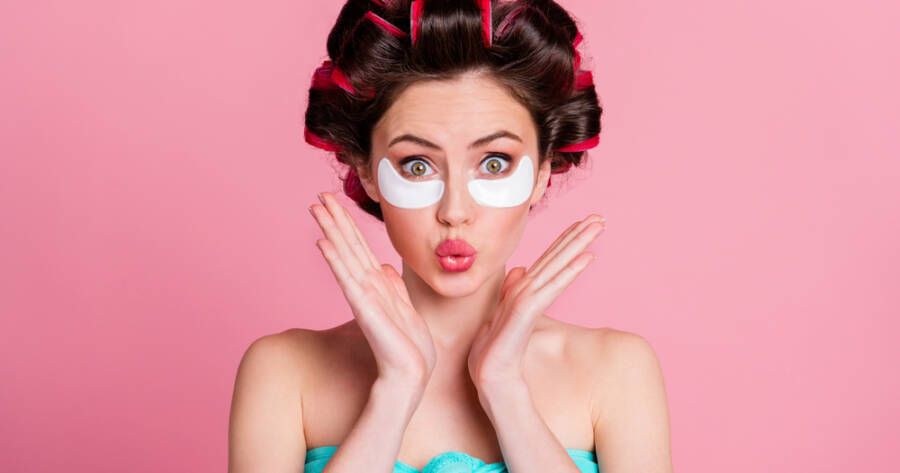From glass skin serums to age-reversing creams, beauty ads know exactly how to push our buttons. But behind the flawless models, glowing testimonials, and fancy packaging, there’s often more sizzle than substance. If you’ve ever bought a product based on a buzzy campaign only to be disappointed, you’re not alone.
The beauty industry thrives on marketing magic—but smart consumers know how to separate fact from fluff. Here are six red flags that signal a beauty product ad might be more hype than help, so you can shop with confidence and protect your wallet.
1. “Clinically Proven” Without Any Details
When a product claims to be “clinically proven,” ask: Proven how? Was it tested in a real clinical setting or in a brand-run study with no peer review? Without links to published research, clear stats, or third-party testing, this phrase means very little.
Watch out for:
-
Vague language like “97% of women saw improvement” without explaining how many people were tested or what “improvement” means.
-
Tiny sample sizes, like “in a study of 12 participants,” which aren’t statistically significant.
Tip: Look for brands that cite real, transparent studies or work with dermatologists or independent labs.
2. Buzzwords That Sound Scientific but Aren’t
“Detoxifying,” “energizing,” “oxygen-boosting,” and “pore-tightening” may sound impressive, but often they don’t mean anything specific—or even real. Beauty marketing loves to use science-y terms to create a sense of credibility, even if the claims aren’t backed by data.
Watch out for:
-
Ingredients with no proven skincare benefits, but hyped up for their exotic names (like “diamond powder” or “meteorite extract”).
-
Terms like “cellular rejuvenation” that aren’t measurable in topical products.
Tip: Focus on ingredient lists and proven actives—like niacinamide, retinol, or hyaluronic acid—instead of marketing jargon.
3. Before-and-After Photos That Feel Too Good to Be True
Yes, transformation photos can be inspiring—but they’re also some of the most manipulated content in the industry. Strategic lighting, makeup, filters, and even time gaps between photos can exaggerate results.
Watch out for:
-
Different angles, lighting, or facial expressions in “before” and “after” shots.
-
Photos with no timeline, such as how long it took to see the result.
Tip: Look for third-party reviews, YouTube demos, or Reddit threads for real-world results you can trust.
4. Celebrity or Influencer Hype with No Ingredient Focus
We all love a good celeb endorsement—but just because a famous face loves a product doesn’t mean it’s effective for your skin type or concerns. These partnerships often focus more on image than on what’s actually in the formula.
Watch out for:
-
Ads that talk more about the spokesperson than the product’s ingredients or function.
-
Vague praise like “It changed my skin!” with no details on how.
Tip: Instead of trusting the face on the bottle, trust the formula. Research the active ingredients and look for real, science-backed benefits.
5. “All-Natural” = Automatically Better? Not Always
Natural ingredients can be great, but just because something is plant-based doesn’t mean it’s effective—or safe for all skin types. Poison ivy is natural, too. “Natural” is often used as a feel-good label, but it doesn’t guarantee results.
Watch out for:
-
Products that claim “chemical-free” (which is impossible—everything is made of chemicals).
-
Distracting from the ingredient list with vague nature-focused language.
Tip: Read the full ingredient list and focus on what’s proven to work for your skin. Whether it’s natural or lab-made, efficacy matters more than origin.
6. Too-Good-to-Be-True Promises
If a product claims to erase wrinkles overnight, shrink pores instantly, or “reverse aging,” that’s your cue to pause. Skin improvement takes time, consistency, and the right products—not magic potions.
Watch out for:
-
Phrases like “instant facelift,” “10 years younger in 7 days,” or “poreless skin guaranteed.”
-
No mention of timeframes, usage instructions, or expected timelines.
Tip: Trust brands that offer realistic expectations, explain how long it takes to see results, and don’t rely on miracle claims.
Smart Shopping = Better Skin (and a Happier Wallet)
In an industry where flash often overshadows function, learning to spot beauty marketing red flags is a game changer. By looking past the buzzwords and hype, you can build a routine that’s based on real results—not empty promises.
So the next time you see a flashy ad or viral TikTok product, take a beat, do a little digging, and remember: glowing skin comes from consistency, not clever copywriting.

